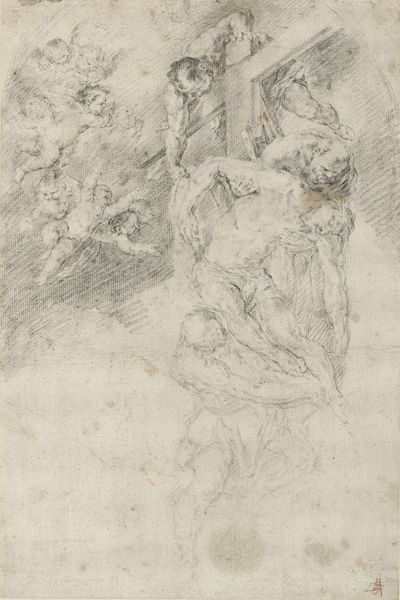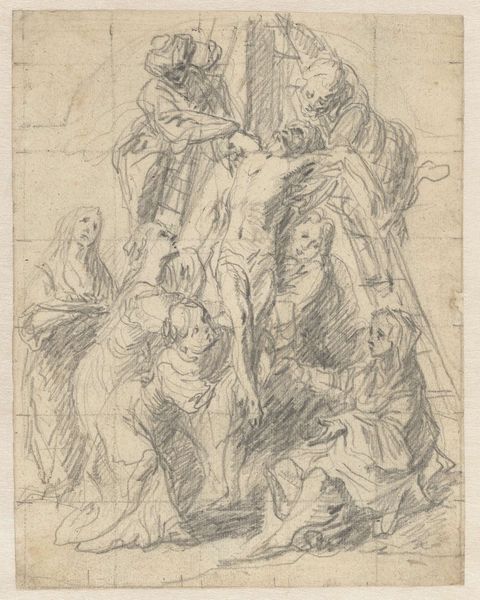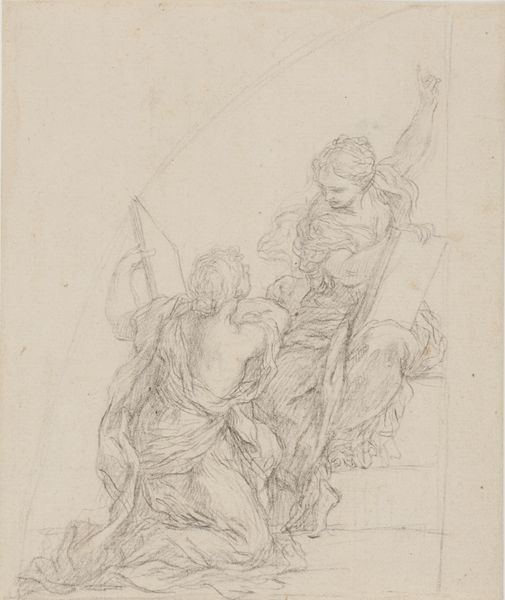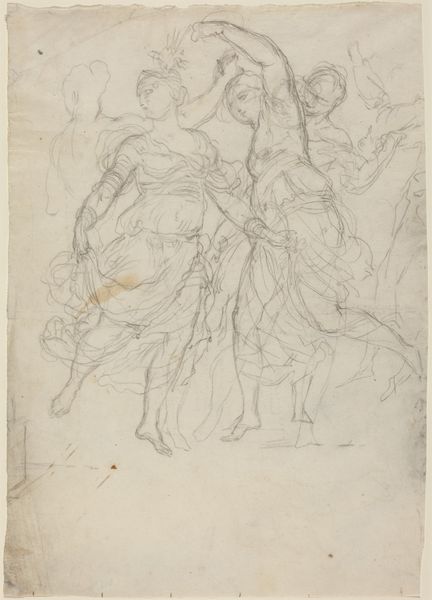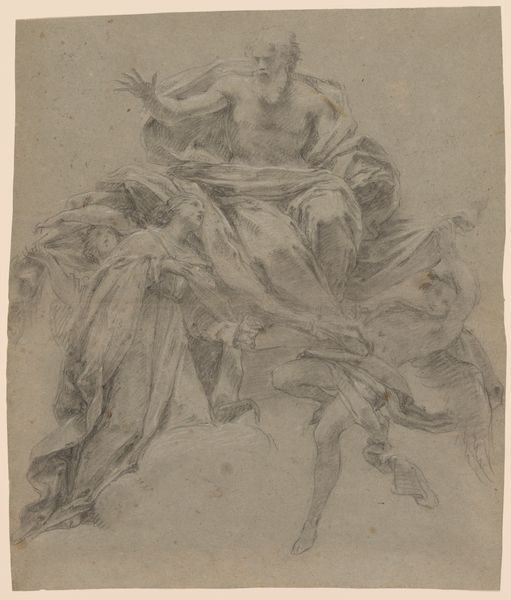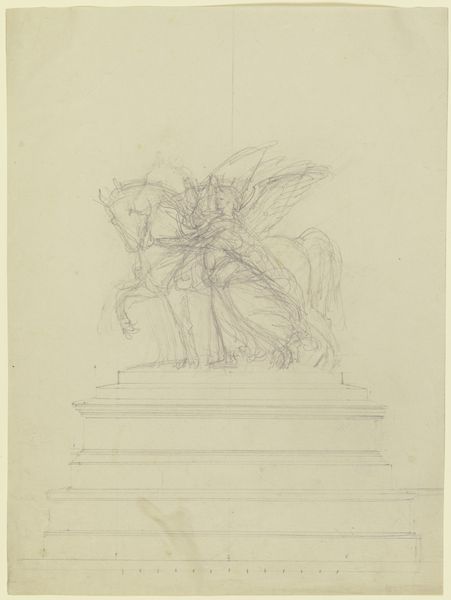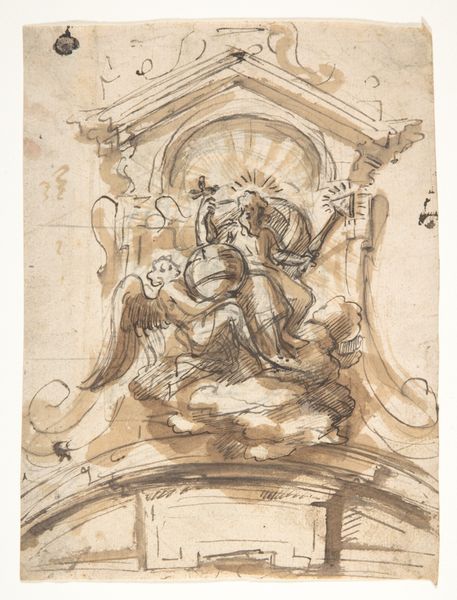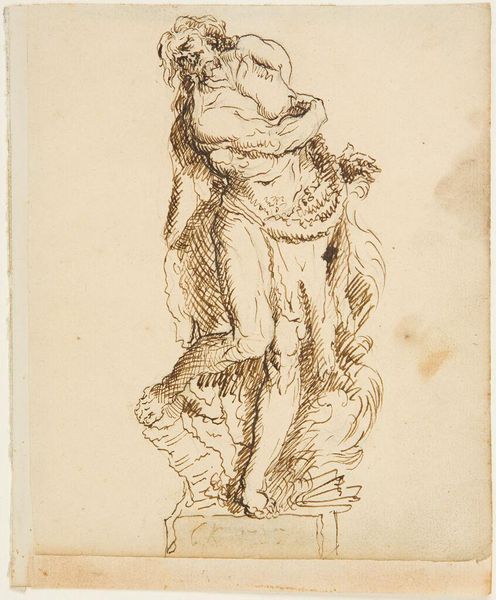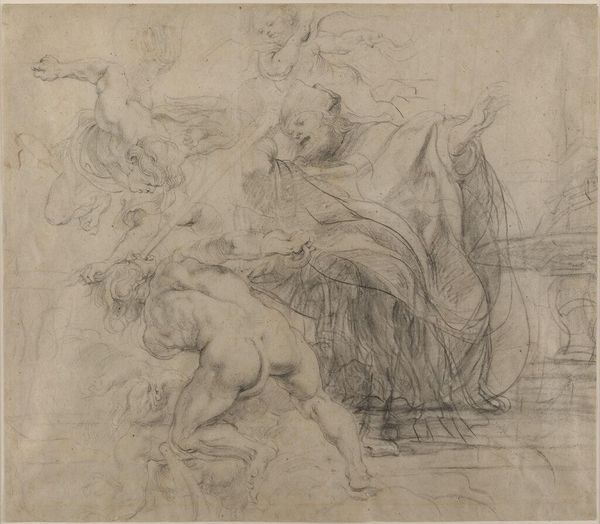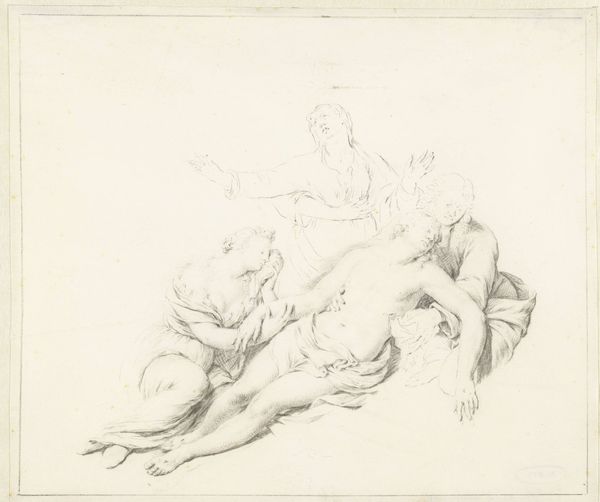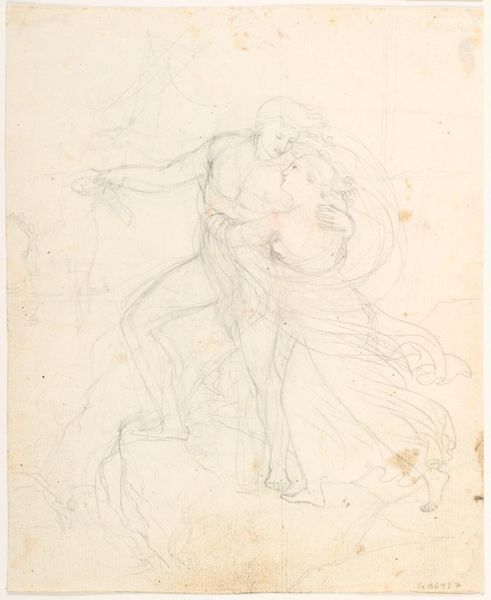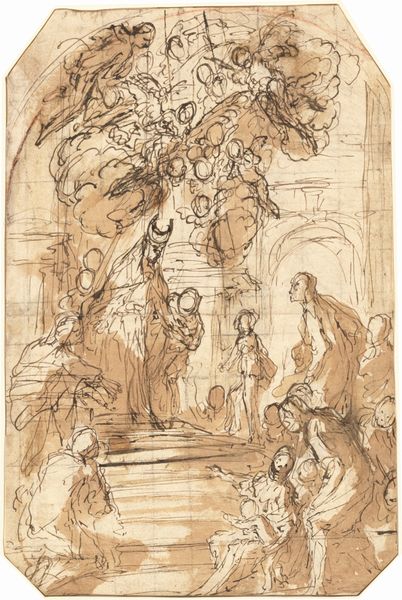
Dimensions: height 312 mm, width 201 mm
Copyright: Rijks Museum: Open Domain
Curator: Here we have "Ontwerptekening allegorische groep", a design drawing for an allegorical group by Emile Boilvin, dating from between 1855 and 1899. It's primarily a pencil and graphite sketch. Editor: My initial impression is of dynamism and a kind of controlled chaos. The figures are rendered with such energy, it feels like a fleeting glimpse into the artist's mind. You can almost feel the movement of the pencil across the page. Curator: Indeed. It’s a fascinating example of academic art wrestling with Romanticism. We see traditional allegorical figures rendered with a certain looseness, almost a prefiguration of Symbolism. The sketch itself gives us insight into the artistic process of the era; a period deeply invested in creating public works of art to reflect shifting social values and bolster national pride. Editor: It speaks volumes about the production methods of the period. Boilvin's use of readily available graphite and paper for sketching hints at a widespread emphasis on efficiency and preparation. The ephemeral nature of a sketch contrasts sharply with the permanent aspirations of allegorical art. It seems to capture that transitional space between idea and form, between draft and finalized project. Curator: Absolutely. And understanding Boilvin's allegorical intentions requires us to look at the symbols present. Though a bit ambiguous, wings signify triumph or divine intervention, while the draped figures could suggest virtues or elements of society. These symbolic choices in public works had political implications, reinforcing prevailing social narratives or attempting to shape public sentiment. Editor: For me, it's compelling how such commonplace materials contribute to this elevated representation. It highlights the skill of Boilvin to bring his concept into reality, and this contrast allows us to engage with a more profound social aspect: access to resources, education, and therefore, opportunities of artistic creation and social commentary. Curator: Looking at it from this angle reveals the role such works played in disseminating ideologies. These designs acted as crucial precursors to monumental art shaping social memory. It's a delicate interplay of political maneuvering and artistry. Editor: Agreed, thinking about art through the means and mode of its making lets us to reflect on how we assign cultural value and meaning. A “simple” pencil work may spark conversations about how concepts transform into palpable forms, ready to mold ideas, sensibilities, and our reality. Curator: Very well said! Editor: Thanks, It's interesting to reflect.
Comments
No comments
Be the first to comment and join the conversation on the ultimate creative platform.
